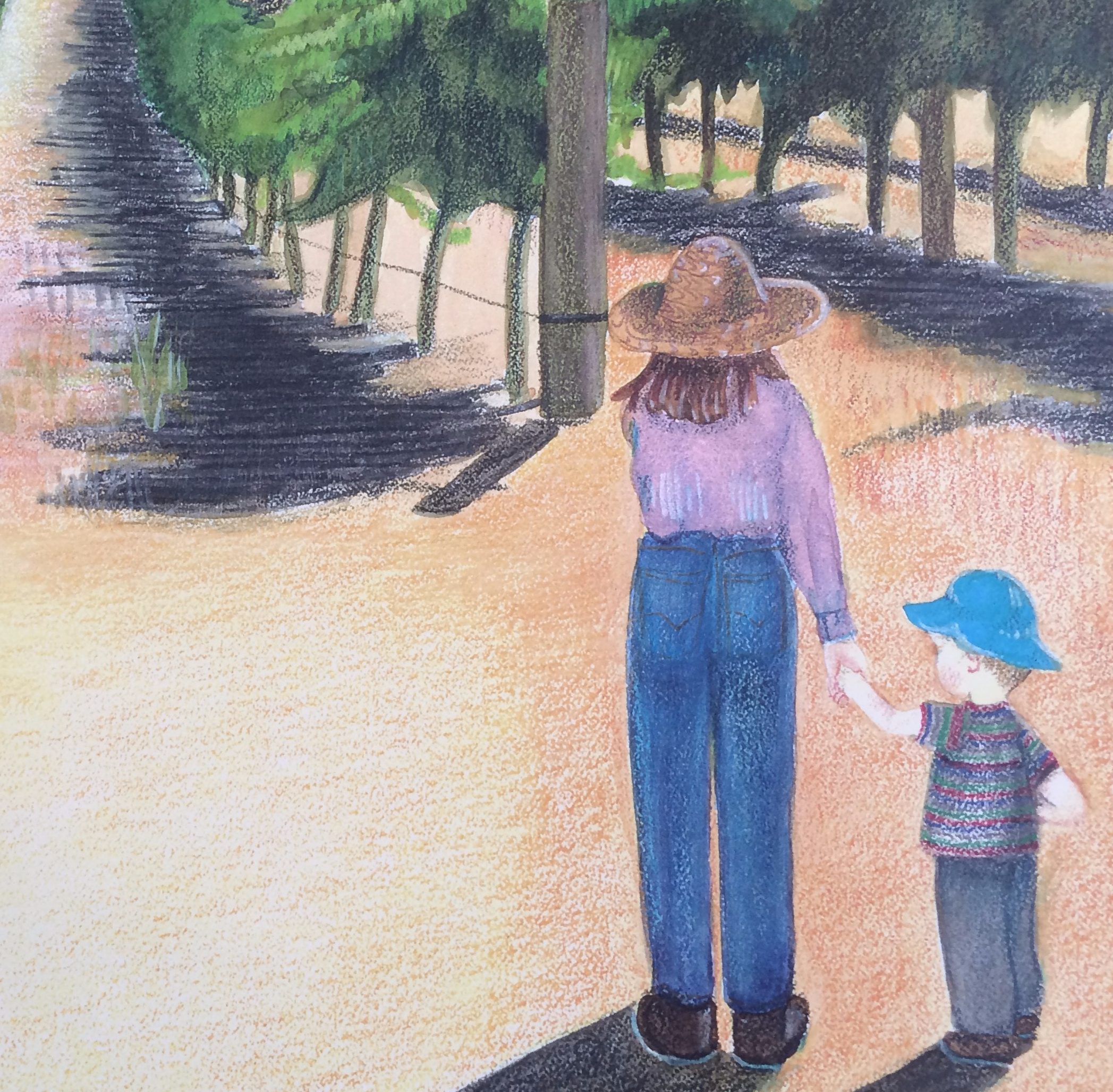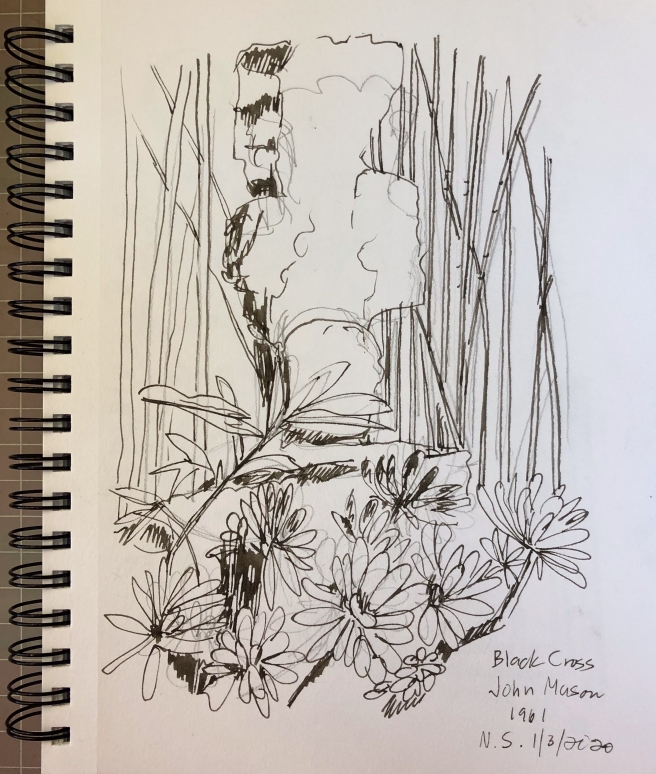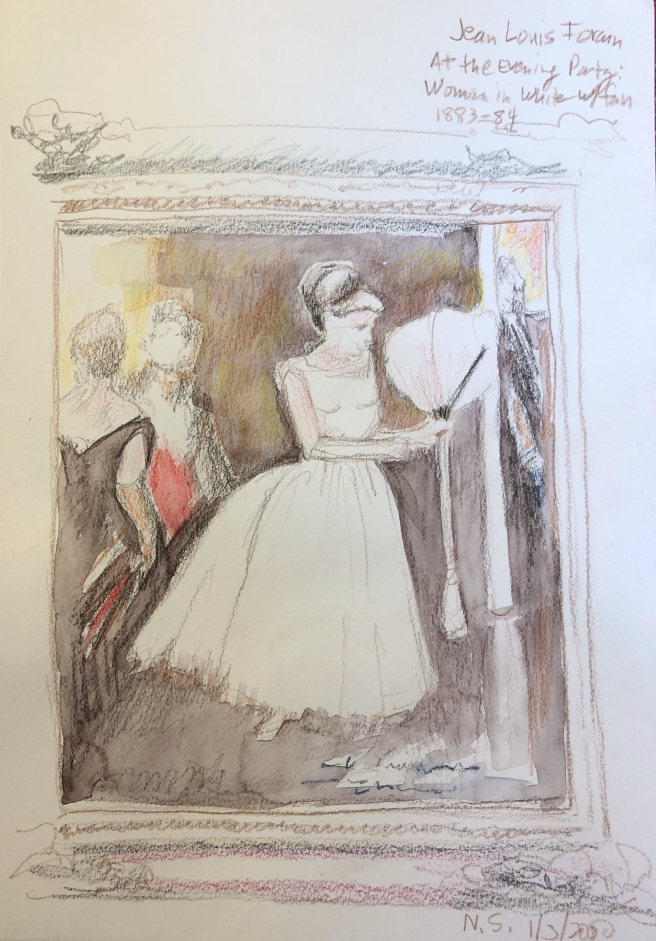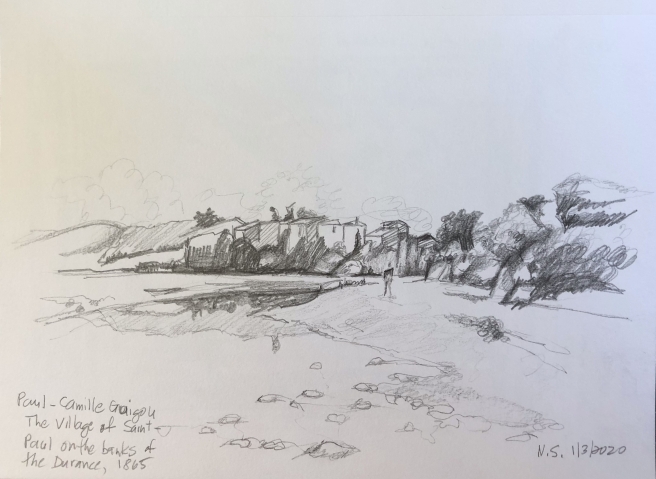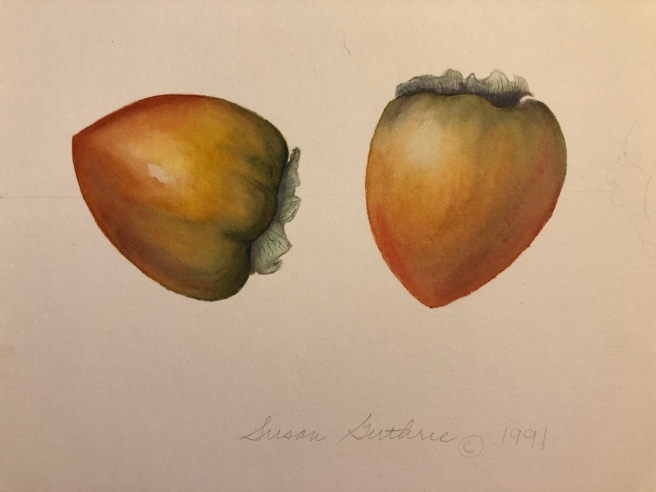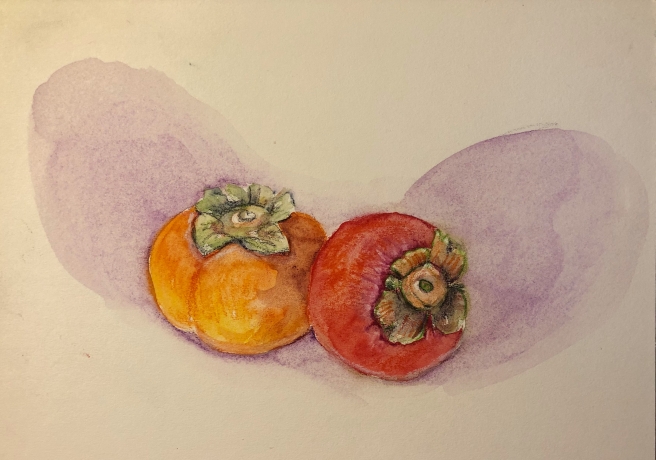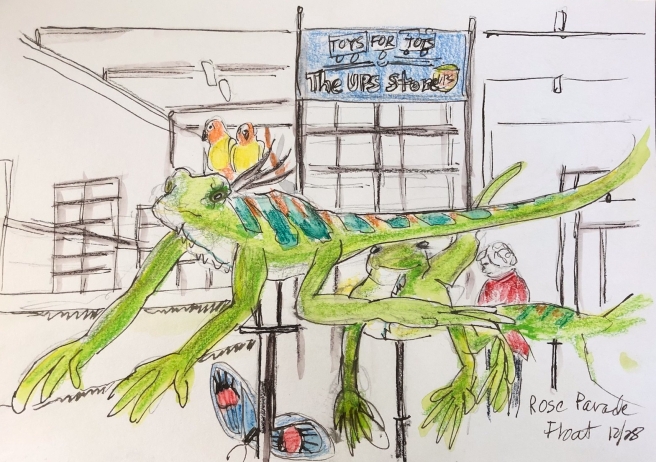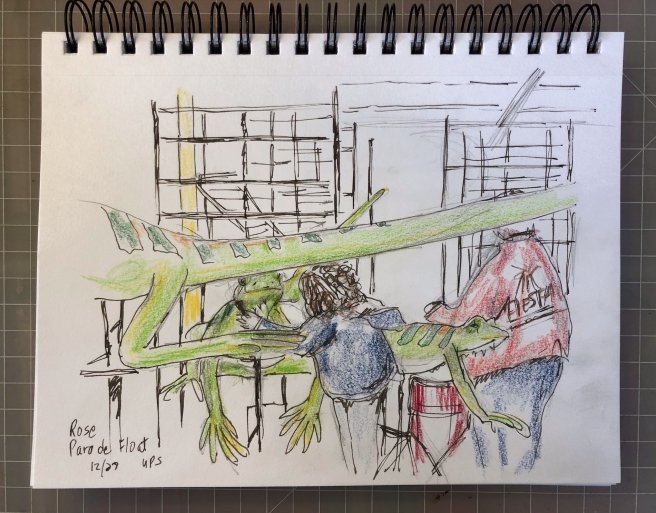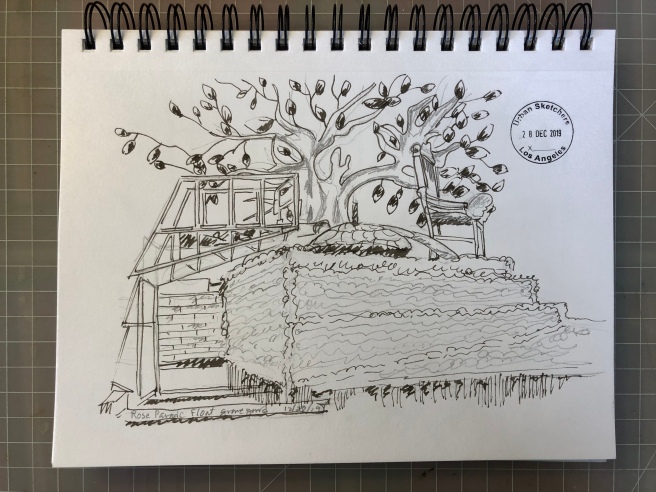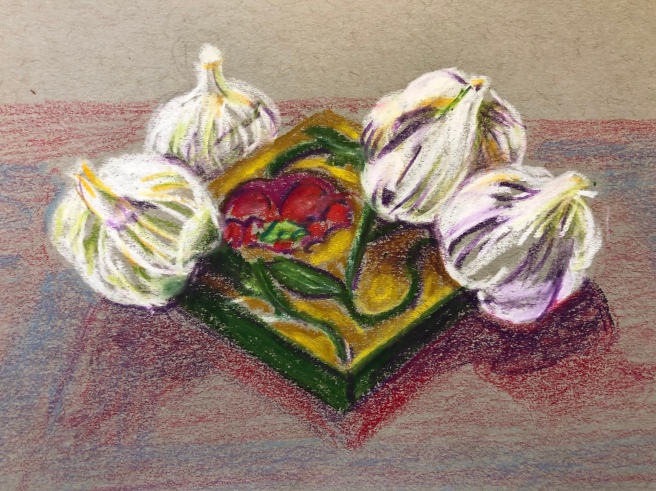
I pulled out my final tomato bush last Sunday. It still looked a vibrant healthy green, and it even had a few blossoms. But it had been quite a while since I had picked a red ripe tomato. (July 6, 2019 shows my first tomato.) So I dug it up. It gets cold in my SoCal neighborhood at night, but rarely freezes. I have actually seen such plants linger all through the winter months, but that seems kind of pointless. Besides, I wanted to make room in that bed because I have grand plans for that spot. Can you guess what’s going in there? Yes, I will be planting seed garlic. I’ve never tried to grow garlic and didn’t realize there was even something called seed garlic. I thought you just bought a couple heads of garlic at the grocery store, pulled apart the individual cloves and then planted them pointy side up—similar to the way you would plant a tulip bulb. But I read online that wasn’t a very foolproof procedure and you should buy seed garlic at a nursery. Of course I soon realized that there might not be any such bulbs in our nurseries right now as those are usually planted here in the fall. As I suspected I didn’t find any in our nearby nurseries. But I didn’t give up my quest and looked online. I found a lovely company called Filaree Garlic Farm, in Omak WA. I spoke on the phone to a lovely woman there and she suggested the two varieties you see in my still life, and they could still be planted in my area this time of year. If you have never ordered plants through the mail, it’s kind of fun. However, being from CA has its drawbacks in that department as there are some plant varieties that cannot be shipped here. I think that’s because there are just so many things that will grow here and a potential invasive plant and/or pesky hitch hiking insect might come into the golden state, inadvertently becoming a pest to the many farms that can be found in our Imperial Valley.
Anyway, it seems that mailing garlic to someone in CA is not forbidden. That is kind of funny if you think about it. Garlic is notoriously stinky, so maybe that keeps the bugs away. (I know vampires are repelled by it.) I don’t know if you are a fan of garlic, but I think my mother put onions and garlic in almost everything we ate as kids. I remember both my mom and dad going to the Gilroy Garlic Festival. My mom was quite taken with the idea of garlic ice cream. Thank goodness she never served that to us, but I did wonder if she ever considered adding a clove or two to some to her oatmeal cookies or carrot cake.
More about the art
I’ve been wanting to get better at my still life drawings/paintings/sketches and thought this striking combination of creamy produce next to a colorful Ephraim Pottery tile would be great. All the colors pop nicely off the grey toned paper, and the waxy crayons add just a bit of a shine. Just as an aside, I think it’s hard to arrange things for a still life. I worry that anything I put together will look contrived. So, I made sure that there was no imagined, or forced, relationship between a beautiful Craftsman poppy tile and two varieties of seed garlic. I wonder if it took Van Gogh a long time to arrange items for his still life paintings? Nah, I imagine that he didn’t really have many worldly possessions and probably just arranged a few non-painting items together and called it a day. I think I would probably like any still life he created just because he personally arranged the items. I mean, he could have created even the most beautiful still life with the most common items laying around, like even a pair of his shoes or boots. Oh yeah, he did several painting of his boots and shoes. If you look at any of those still lives I’m sure you would be distracted by his wonderful brush work, making even the mundane important and beautiful.
I post a lot of my art here that I do as an urban sketcher, but almost never post anything for other urban sketchers on Facebook. I knew such a still life would not be appropriate for an urban sketching post. They have very strict rules and probably wouldn’t have even allowed Van Gogh’s boots. In fact, they even have a manifesto. And here it is:
- We draw on location, indoors or out, capturing what we see from direct observation.
- Our drawings tell the story of our surroundings, the places we live and where we travel.
- Our drawings are a record of time and place.
- We are truthful to the scenes we witness.
- We use any kind of media and cherish our individual styles.
- We support each other and draw together.
- We share our drawings online.
- We show the world, one drawing at a time.
You know, except for the fact that Van Gogh did not share his drawings online and was a pretty solitary individual, I think he met the criteria for everything else on this list for urban sketchers. I love the idea of a pair of shoes or boots telling the stories of places someone has traveled, and how he showed us his world, one painting/drawing at a time.
And for those of you interested in my “poppy” tile you might enjoy looking at other pieces of Ephraim Pottery at www.ephraimpottery.com Their images and pottery shapes are taken directly from the Craftsman sensibility and the glaze colors they use are quite extraordinary. There is a section on the website that features those colors and it’s called “glaze swatches.” Check it out. They started out in Wisconsin, but now have a shop in Cambria. And if you are ever traveling on the CA coast, heading to Heart’s Castle or Big Sur, you might want to check out that shop in Cambria.
Final words about the garlic and my garden…
I will be planting the garlic as soon as I post this. Filaree Garlic Farm has a pretty good description of growing, harvesting and curing, and storing garlic. Armed with the New Moon and such good directions I think it’s the optimum time to plant it for the best outcome. In a previous post I mentioned that my grandfather (my mom’s dad) said you should plant such things as bulbs and root vegetables by the dark of the moon—not really sure why. My grandfather died before I was two, so I didn’t know him. But it does remind me of my mom and I know she would approve of my plan of action.
You may, or may not, be wondering what other plans I have for other garden beds this year. And if you are wondering, I will say that I plan to plant other items to support what I am calling my “pickle garden.” I have seeds for two different kinds of dill and plan to plant at least 3 different kinds of cucumbers. Don’t know what I could grow that would produce acetic acid and/or salt. Not going to worry about that. Here we go!
